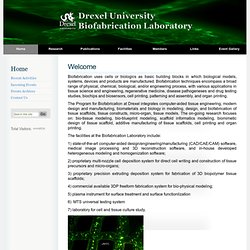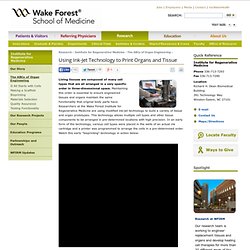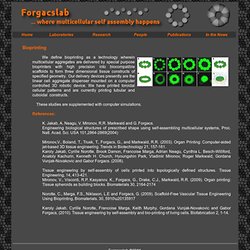

Chumbawamba - She's got all the friends that money can buy (with lyrics) For iPhone - Dropbox. Sorry, there was a problem loading this page.

Bring your files with you when you're on the goAdd files to your Favorites for fast, offline viewingEasily upload photos and videos to DropboxShare freely with friends and family Download for iPhone. University Biofabrication Lab. Biofabrication uses cells or biologics as basic building blocks in which biological models, systems, devices and products are manufactured.

Biofabrication techniques encompass a broad range of physical, chemical, biological, and/or engineering process, with various applications in tissue science and engineering, regenerative medicine, disease pathogeneses and drug testing studies, biochips and biosensors, cell printing, patterning and assembly, and organ printing. The Program for Biofabrication at Drexel integrates computer-aided tissue engineering, modern design and manufacturing, biomaterials and biology in modeling, design, and biofabrication of tissue scaffolds, tissue constructs, micro-organ, tissue models. The on-going research focuses on: bio-tissue modeling, bio-blueprint modeling, scaffold informatics modeling, biomimetic design of tissue scaffold, additive manufacturing of tissue scaffolds, cell printing and organ printing. 6) MTS universal testing system.
Bioprinting - WFIRM - Wake Forest Baptist Medical Center. Living tissues are composed of many cell types that are all arranged in a very specific order in three-dimensional space.

Maintaining this order is essential to ensure engineered tissues and organs maintain the same functionality that original body parts have. Researchers at the Wake Forest Institute for Regenerative Medicine are using modified ink-jet technology to build a variety of tissue and organ prototypes. This technology allows multiple cell types and other tissue components to be arranged in pre-determined locations with high precision. In an early form of the technology, various cell types were placed in the wells of an actual ink cartridge and a printer was programmed to arrange the cells in a pre-determined order.
Watch this early "bioprinting" technology in action below: Currently, our researchers are using an adapted version of ink-jet printing technology to enable on-site "printing" of skin for soldiers with life-threatening burns. Organovo. Printing body parts: Making a bit of me. Welcome to the Forgacslab Website. Engineering biological structures of prescribed shape using self-assembling multicellular systems, Proc.

Natl. Acad. Sci. USA 101,2864-2869(2004) Mironov,V., Boland, T., Trusk, T., Forgacs, G., and Markwald, R.R. (2003). Tissue engineering by self-assembly of cells printed into topologically defined structures. Norotte, C., Marga, F.S., Niklason, L.E and Forgacs, G. (2009). Home.